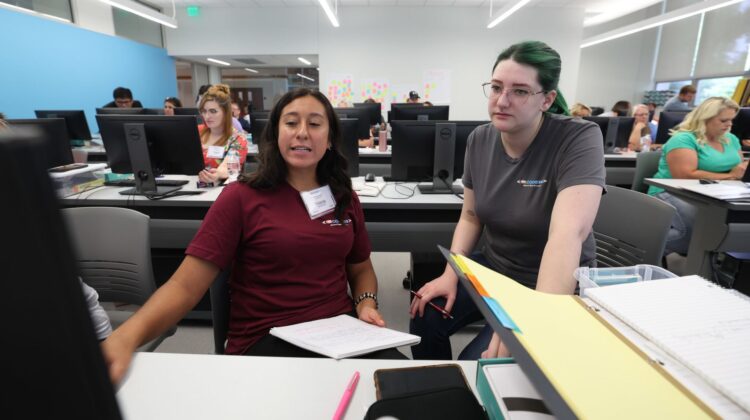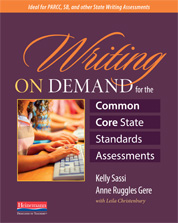Thanks for your feedback on the last newsletter! Here is the next one with new information, reminders, and lots of opportunities. Feel free to send any feedback. I really appreciate it. This will also be posted on the blog each week in case you need to find it. … [Read more...] about CODERS Update, Issue 2
Tell you and your students CODERS story. Tell a Pixar Story. Try out this form and share a draft of your story. Use this link with your students as well. Once upon a time there was ___. Every day, [the students, the teacher, whoever the story is about]. One day ___. Because of that, ___. Because of that, ___. Until finally ___. After you write your story, take a few … [Read more...] about Tell your “Pixar” Story
All CODERS current and past participants are invited to view and share stories through our newsletter. Please take a moment to read about upcoming opportunities. View the CODERS Newsletter. … [Read more...] about CODERS Newsletter is Out!
The first lesson(s) should be focused on either: Career Connections and Computational Thinking https://blogs.missouristate.edu/cwccc/2023/06/06/careers-in-cs-and-stem-representation-matters/ https://blogs.missouristate.edu/cwccc/2023/06/05/introduction-to-computational-thinking/ Here's who to talk to for questions: Contact Dr. Franklin … [Read more...] about First Lesson Reflection Due on September 30
We will be in the Plaster Student Union Ballroom from 8:30-4:00 pm. Please bring your laptops/chromebooks with power sources. We look forward to seeing you all soon! … [Read more...] about ReGroup Date Reminder: September 21
The window for completing the student surveys is ..... August 29-September 15! Link … [Read more...] about Complete the Student Surveys
DJI Drone CoDrone Robot Dog Smart Home Kit I found these club packs (as of now, it is showing 12 available) on Amazon. Each of these packs has 10 microbits and the price of the pack is showing $285. BBC MICRO:BIT Micro:bit v2 Go Club 10-Pack - Batteries and USB Cables Included https://a.co/d/bPvjYHL Cutebot (ASIN B081ZSCZTV) Vilros BBC Micro/Bit v@ Basic … [Read more...] about CODERS Kit Ordering Information Year 1-3
Micro:bit cutebot is a small programmable Bot designed for educational purposes for teaching programming. Go on the wonderful learning session with Dr. Iqbal where he covers hands-on Cutebots activities to teach programming, logic, and computational thinking. Teach your cutebot to stop its motion when an obstacle is in its way. Then build on the radio lessons from the Micro:bit … [Read more...] about Cutebots
Freewriting.pptx is non-stop writing. can move from topic to topic. is writing more than you think you can. is not censored; that means don’t worrying about spelling, grammar, and mechanics. is not worrying about how good the writing is. is keeping your pen on the paper and writing even if you do not know what to say. is writing that is not judged … [Read more...] about Freewriting is . . .
Name:____________________________Date:______________Block:___________ Ms. Franklin English IV Revision occurs after you have a complete piece, although revisions occurs at all stages. Match what you have already written with what you now wish to say. Create out of the two a new piece that suits their present purpose Revision never stops The First … [Read more...] about Bones, Muscles & Skin: Purpose and Revision in All Kinds of Writing
The IF/THEN® Collection is the largest free resource of its kind dedicated to increasing access to authentic and relatable images of real women in STEM. The Educator Hub helps you align standards and choose videos for your classroom. Show two videos as week as a bellringer or an exit pass for six weeks. Here in this digital library, you will find thousands of photos, videos … [Read more...] about Careers in CS and STEM: Representation Matters
https://blogs.missouristate.edu/discounts/archives/2780 … [Read more...] about Silver Dollar City Teacher Appreciation Days June 4-30
Computational thinking is the step that comes before programming. It’s the process of breaking down a problem into simple enough steps that even a computer would understand. Dr. Iqbal explains the analogy between design and computer programming. Have a journey with him where he explains binaries, bits, coding, and many more things related to computers and teaches how to think … [Read more...] about Introduction to Computational Thinking
Here are writing strategies that are evidence-based. We hope that you integrate some of these writing strategies in your lessons. Write to Learn Strategies Daily writing, from freewriting to KWLS to creative forms like Haiku, is a thinking tool for learning in all disciplines. Below is a list of research-based writing strategies that we would like you to try writing to learn … [Read more...] about Writing to Learn
After completing a CODERS lesson, you will reflect on those lessons. We collected reflections last year. Some of you may remember Dr. Davis asking for those. Take a moment to review the lesson reflections. Click through and view the reflections for each of the lessons/concepts. This link will be available through June 16. If you would like access after that, please email Keri … [Read more...] about Lesson Reflections: What Stories Do They Tell?
Interesting article on the increasing demand for degrees in Computer Science. While UC-Berkeley has over 2,000, Missouri State University has nearly 300. Talk with Dr. Iqbal for any questions. Demand for computer science classes has overwhelmed many US campuses in recent years, with growth in student numbers not matched by similar expansions in faculty or facilities. UC … [Read more...] about Career CX: Computer Science Demand Grows Exponentially
Congratulations on your selection to participate in the CODERS Summer Launch Experience. Tammi, Razib, Andrew, Diana, Judith, and I are excited to see you Monday-Thursday, June 5-8 on the campus of Missouri State University in Cheek 151. This is a change from four to five days. We hope you are okay with this! We will meet from 8:30-4:30. Coffee, conversation, and supply pick-up … [Read more...] about Welcome 2023 CODERS Colleagues
New STEM-specific scholarships ignite students’ ability to attend college. The National Science Foundation (NSF) has awarded Missouri State University $1.5 million to provide scholarships to students interested in science, technology, engineering and math over the next six years. Submit your scholarship applications today. … [Read more...] about STEM Scholarships
Today we met to prepare presentations for the Youth Writing Conference on May 8. Teacher-consultants Laurie Sullivan from Hillcrest High School and Tanya Hannaford from Mt. Vernon High School facilitated. The morning started with an excerpt from Terry Tempest Williams called "Why I Write." After listening to the reading, the 25 teachers from areas schools shared why they … [Read more...] about Why I Write: A Presenter Workshop for the Youth Writing Conference
Colleen Appel, Teacher-Consultant of the Ozarks Writing Project, describes professional development and student writing activities to teach on demand writing. Teachers across the disciplines are increasingly seeing themselves as teachers of literacy and understand the literacy practices in the content areas are distinct but overlap in a student’s daily literacy learning … [Read more...] about Writing on Demand: A Plan for Professional Development



